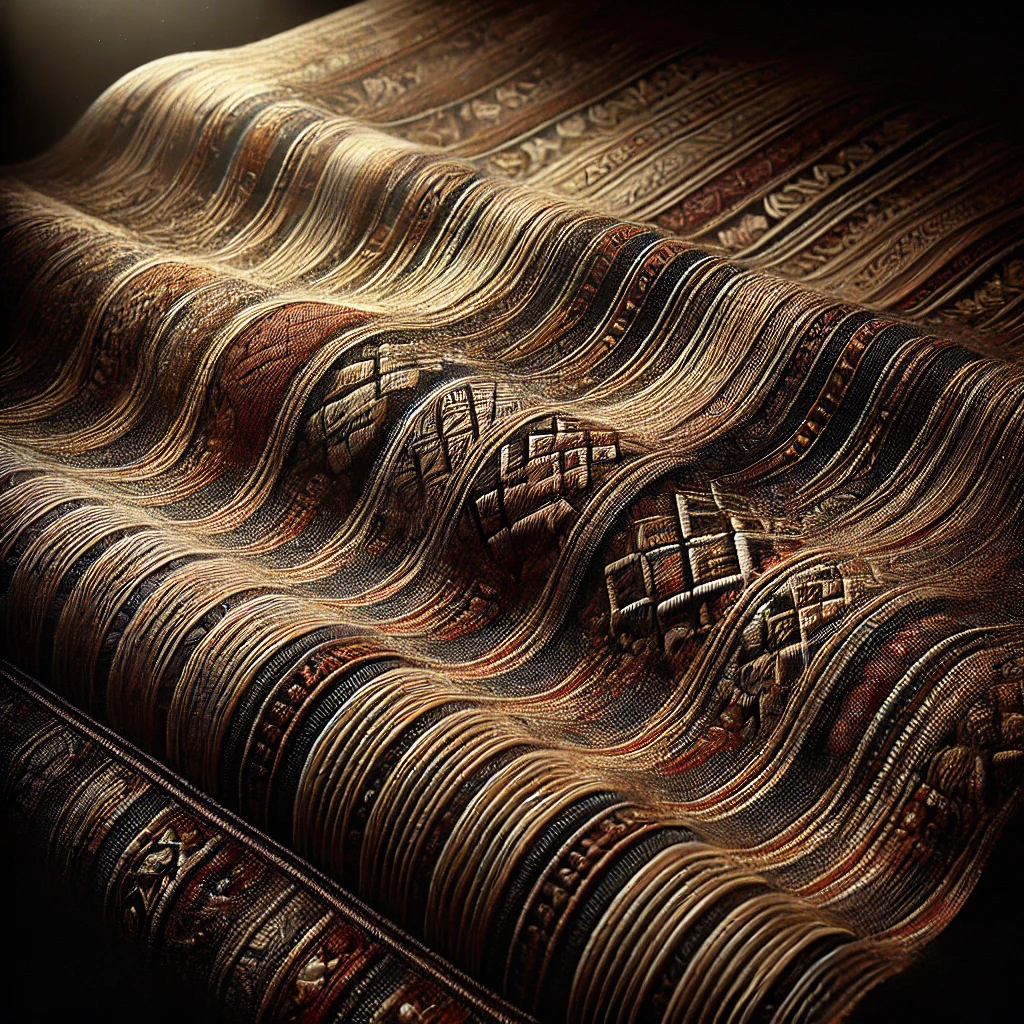In the heart of every Filipino community, there exists a tapestry of tradition, skill, and artistry that has been meticulously crafted over generations. This tapestry, both literal and figurative, is the art of Filipino weaving – a practice as diverse and colorful as the archipelago itself. As I run my fingers over the intricate patterns of an inabel cloth from my hometown of Vigan, I am reminded of the countless hands that have kept this tradition alive, each thread a testament to our resilience and creativity as a people. Today, we embark on a journey through the rich landscape of Filipino weaving, exploring the patterns that tell our stories and the techniques that have stood the test of time. From the sun-drenched fields where native cotton grows to the bustling markets where these textiles find new homes, we will unravel the complexities of this ancient art form and discover how it continues to shape our cultural identity in the modern world.
The Historical Threads of Filipino Weaving
Pre-Colonial Roots
Long before the arrival of foreign influences, the islands that would become the Philippines were already home to master weavers. Archaeological evidence suggests that weaving has been practiced in the region for at least 2,000 years. The early Filipinos, with their ingenuity and connection to the natural world, transformed plant fibers into cloth, creating garments that not only served practical purposes but also carried deep cultural significance. These early textiles were more than mere fabric; they were canvases upon which our ancestors painted their beliefs, social structures, and artistic visions.
Colonial Influences and Evolution
The arrival of Spanish colonizers in the 16th century brought significant changes to the weaving landscape of the Philippines. New techniques, materials, and designs were introduced, blending with indigenous practices to create unique hybrid styles. The galleon trade further expanded the palette of Filipino weavers, introducing Chinese silk and Indian cotton. Despite these foreign influences, the core of Filipino weaving remained distinctly local, with weavers adapting new elements to suit their traditional aesthetics and cultural needs. This period of cultural exchange gave birth to textiles like the piña cloth, a delicate fabric made from pineapple fibers that became prized both locally and abroad.
Regional Diversity in Filipino Weaving
The Ilocano Inabel
In my home region of Ilocos, the art of inabel weaving has been a source of pride and livelihood for centuries. Inabel, which means “woven” in Ilocano, is characterized by its geometric patterns and sturdy cotton construction. The patterns of inabel are not merely decorative; they are a language unto themselves, with each motif carrying specific meanings. The binakul pattern, for instance, with its hypnotic optical illusion effect, is believed to ward off evil spirits. As a child, I would watch my grandmother weave these intricate designs, her hands moving with a rhythm that seemed to echo the beating heart of our culture.
T’nalak of the T’boli
Traveling south to the island of Mindanao, we encounter the t’nalak of the T’boli people. This sacred cloth, woven from abaca fibers, is said to be inspired by dreams. T’boli weavers, known as dreamweavers, translate the patterns they see in their sleep into intricate designs on the loom. The process of creating t’nalak is steeped in ritual and tradition, with certain taboos and practices observed to ensure the purity of the final product. The resulting textiles are not just beautiful; they are considered living entities, embodying the spirit of the T’boli people and their connection to the divine.
Piña Weaving of Aklan
On the island of Panay, in the province of Aklan, we find the delicate art of piña weaving. This technique, developed during the Spanish colonial period, uses fibers extracted from pineapple leaves to create a gossamer-thin fabric prized for its softness and sheen. The process of creating piña cloth is labor-intensive, requiring great skill and patience. From extracting the fibers to the final embroidery, each step is a testament to the dedication of Aklanon weavers. The resulting garments, often adorned with intricate calado embroidery, are worn with pride at the most important Filipino celebrations.
Techniques and Materials in Filipino Weaving
Traditional Looms and Tools
At the heart of Filipino weaving are the looms that have been used for generations. These range from simple backstrap looms, which can be easily transported and set up, to more complex foot looms introduced during the colonial period. Each type of loom has its own advantages and is suited to different weaving techniques and patterns. The tools used in weaving are often handcrafted and passed down through families, carrying with them the stories and skills of previous generations.
| Loom Type | Description | Best Suited For |
|---|---|---|
| Backstrap Loom | Portable, body-tensioned loom | Narrow fabrics, traditional patterns |
| Foot Loom | Larger, stationary loom with foot-operated treadles | Wider fabrics, complex patterns |
| Upright Loom | Vertical loom used for tapestry weaving | Large decorative pieces, wall hangings |
Natural Fibers and Dyes
Filipino weavers have long relied on the abundance of natural fibers found in our lush tropical environment. Cotton, abaca, and piña are among the most commonly used plant fibers, each with its own unique properties and challenges. The preparation of these fibers is an art in itself, requiring knowledge passed down through generations. Natural dyes, derived from local plants and minerals, are still used by many traditional weavers, creating colors that are both vibrant and environmentally friendly. The use of these natural materials connects the weaver to the land, reinforcing the deep ecological awareness that has always been part of Filipino culture.
Weaving Techniques
The diversity of Filipino weaving is reflected in the myriad techniques employed by artisans across the archipelago. Each region has developed its own specialized methods, often closely guarded and passed down within families or communities. Some common techniques include:
- Ikat: A resist-dyeing technique where threads are tied and dyed before weaving, creating patterns with a characteristic blurred edge.
- Supplementary Weft: Additional decorative threads are woven into the fabric to create raised patterns or figures.
- Tapestry Weaving: Used to create pictorial designs, often depicting scenes from nature or mythology.
- Double Weave: Two layers of fabric are woven simultaneously, creating reversible textiles with different patterns on each side.
Symbolism and Cultural Significance
Patterns as Language
In Filipino weaving, patterns are more than mere decoration; they are a form of non-verbal communication, rich with meaning and cultural significance. Each motif, whether geometric or figurative, carries with it a story, a belief, or a piece of our collective history. The diamond patterns common in Cordilleran textiles, for instance, often represent fertility and abundance. The flowing lines found in many coastal weavings echo the waves of the sea that surrounds our islands. By understanding these patterns, we can read the fabric of our culture, deciphering the wisdom and worldviews of our ancestors.
Rituals and Ceremonies
Woven textiles play a crucial role in many Filipino rituals and ceremonies. From birth to death, these fabrics mark important life transitions and serve as tangible connections to our spiritual beliefs. In some indigenous communities, certain textiles can only be worn by individuals who have achieved specific social status or completed particular rituals. The act of weaving itself is often surrounded by ritual, with prayers and offerings made to ensure the success of the work. This intertwining of craft and spirituality highlights the holistic worldview of Filipino culture, where the material and the spiritual are inseparable.
Challenges and Preservation Efforts
Modern Threats to Traditional Weaving
Despite its rich history and cultural importance, traditional Filipino weaving faces numerous challenges in the modern world. The allure of cheap, mass-produced textiles threatens to overshadow the value of handwoven fabrics. Younger generations, drawn to urban centers and modern lifestyles, are often reluctant to take up the time-consuming and labor-intensive craft of weaving. Climate change and deforestation pose threats to the natural resources upon which traditional weaving depends. These challenges require us to think creatively about how to preserve and adapt our weaving traditions for the future.
Initiatives for Preservation and Promotion
In response to these challenges, various initiatives have emerged to preserve and promote Filipino weaving. Government agencies, non-profit organizations, and private enterprises are working together to support traditional weavers and bring their products to wider markets. Educational programs are being developed to pass on weaving skills to younger generations, often integrating traditional techniques with contemporary design. Efforts are also being made to document and digitize patterns and techniques, ensuring that this knowledge is not lost to time. As someone deeply invested in this field, I have had the privilege of participating in many of these initiatives, witnessing firsthand the positive impact they can have on communities and individual artisans.
The Future of Filipino Weaving
Innovation and Adaptation
While preserving traditional techniques is crucial, the future of Filipino weaving also lies in innovation and adaptation. Many contemporary designers are finding ways to incorporate traditional weaving into modern fashion and interior design, creating a bridge between the past and the present. Sustainable practices are being developed to ensure that weaving remains environmentally friendly and economically viable. The integration of technology, from digital design tools to online marketplaces, is opening up new possibilities for weavers to reach global audiences while maintaining their cultural integrity.
Cultural Pride and Identity
As we look to the future, it is clear that Filipino weaving is more than just a craft; it is a vital part of our cultural identity. By continuing to value and support this art form, we affirm our connection to our heritage and our place in the world. Each woven piece carries with it the stories of our people, the beauty of our land, and the resilience of our spirit. In a world that often seems to be unraveling, the art of weaving reminds us of the strength we find in coming together, thread by thread, to create something beautiful and enduring.
Weaving Our Future
As we come to the end of our journey through the intricate world of Filipino weaving, I am filled with a sense of hope and responsibility. The patterns and techniques we have explored are not relics of the past, but living traditions that continue to evolve and inspire. They are a testament to the creativity, skill, and cultural richness of the Filipino people. As we face the challenges of the modern world, let us remember the wisdom woven into every textile – the importance of patience, the beauty of diversity, and the strength that comes from being part of a larger whole. In every thread, we find a story; in every weave, we create a legacy. It is up to us to ensure that this legacy continues to thrive, connecting us to our roots while propelling us into a future where our cultural heritage is both honored and renewed.
Disclaimer: While every effort has been made to ensure the accuracy of the information presented in this article, please note that weaving traditions can vary significantly even within regions. The author’s personal experiences and research form the basis of this piece. If you notice any inaccuracies, please report them so we can promptly make corrections. This article is intended to provide a general overview and appreciation of Filipino weaving and should not be considered a comprehensive guide to all weaving practices across the Philippines.




